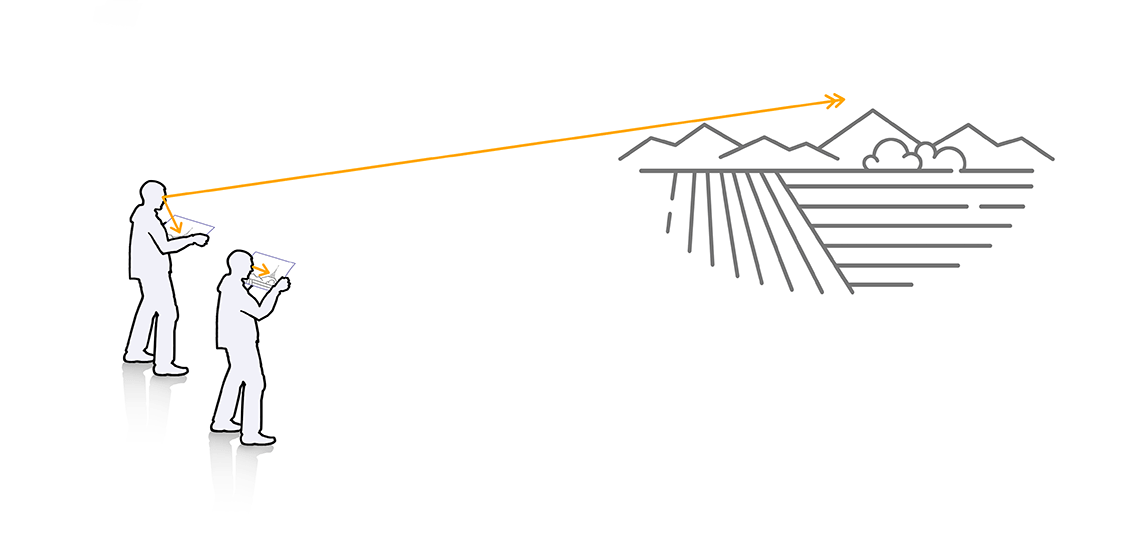The following provides a starting point and understanding of some of the key issues relevant to this practice.
Photomontages use photographs of an actual scene modified by the insertion of an accurate representation of the visible changes brought about by a proposed development. Properly constructed photomontages can serve as a useful means of indicating the potential visual effect of a future development, and should be easily understood and usable by members of the public and those with a non-technical backgrounds.
Viewpoint selection
The landscape professional should select a set of photographic viewpoints which are considered representative of the range of likely effects, viewing experiences and viewers, ensuring that none are under or over represented. Viewpoints should be agreed with the regulatory authority or authorities where possible, and with other parties as considered necessary.
Field of view
The term ‘field of view’ is used to describe the height and width of a view as represented by an image. These constitute the horizontal field of view and vertical field of view and are expressed as angles in degrees. The proposal under consideration and its relevant landscape context will determine the horizontal field of view required for photography and photomontage from any given viewpoint. This will in turn determine whether a single-frame image or a wide-angle lens will suffice or whether a panorama will be required. The camera may also be used in portrait orientation (rather than in landscape orientation) for panoramic creation as well as for single-frame images.
In the past it was regarded that a panoramic image of 124 degrees horizontal field of view x 55 degrees vertical field of view be the standard requirement for Visual Impact Assessments because it was relative to the human primary field of view. While this may be preferable in some cases, the panoramic field of view does not need to be confined to these limits. The field of view will tend to vary on site, and will depend on capturing different and challenging landscape situations like tall buildings, steep mountains or where a telecommunications tower would appear. The horizontal field of view is usually more relevant to representations of rural and peri-urban landscapes and the vertical field of view may be more important in urban landscapes.
Two-dimensional photographic images and photomontages alone cannot capture or reflect the complexity underlying the visual experience, and should therefore be considered an approximation of the three-dimensional visual experiences that an observer would receive in the field. Also when printed the images will not replicate the same range of colour or contrast. Furthermore human sight is not static, thus the horizontal field of view naturally turns as the eyes turn. Turning the eyes far from their central position is uncomfortable, so we tend to turn our heads and if necessary our whole bodies to take in a wide view.





